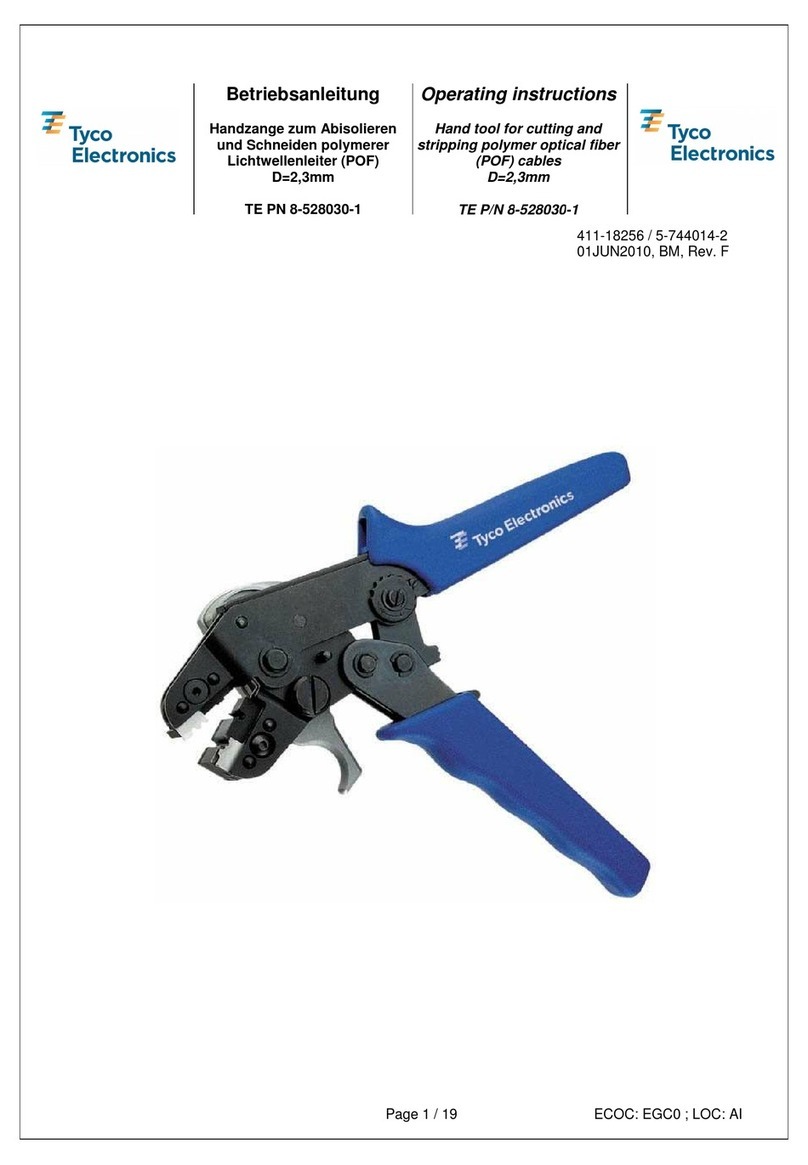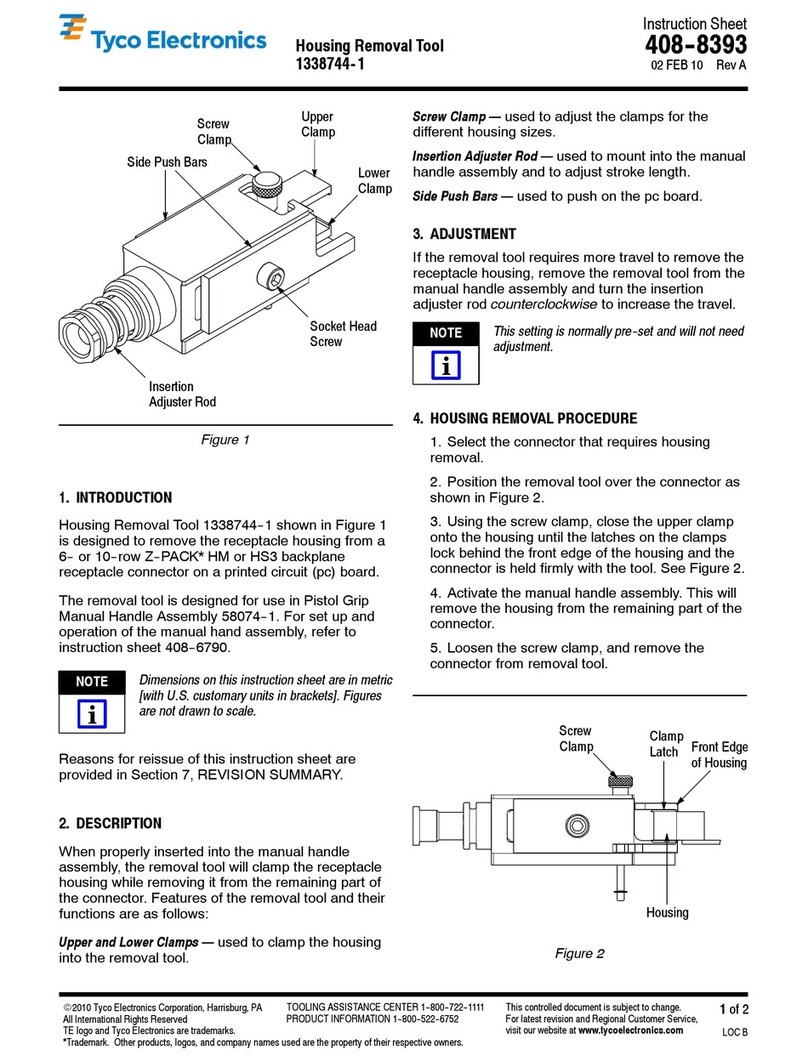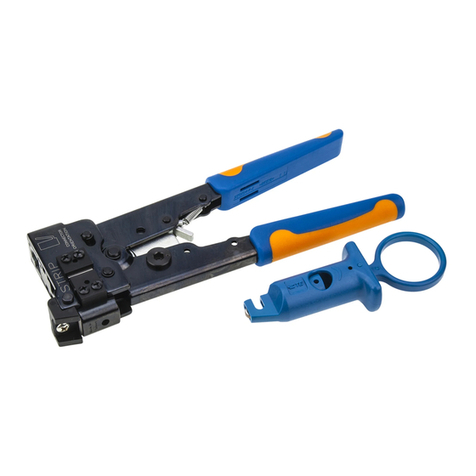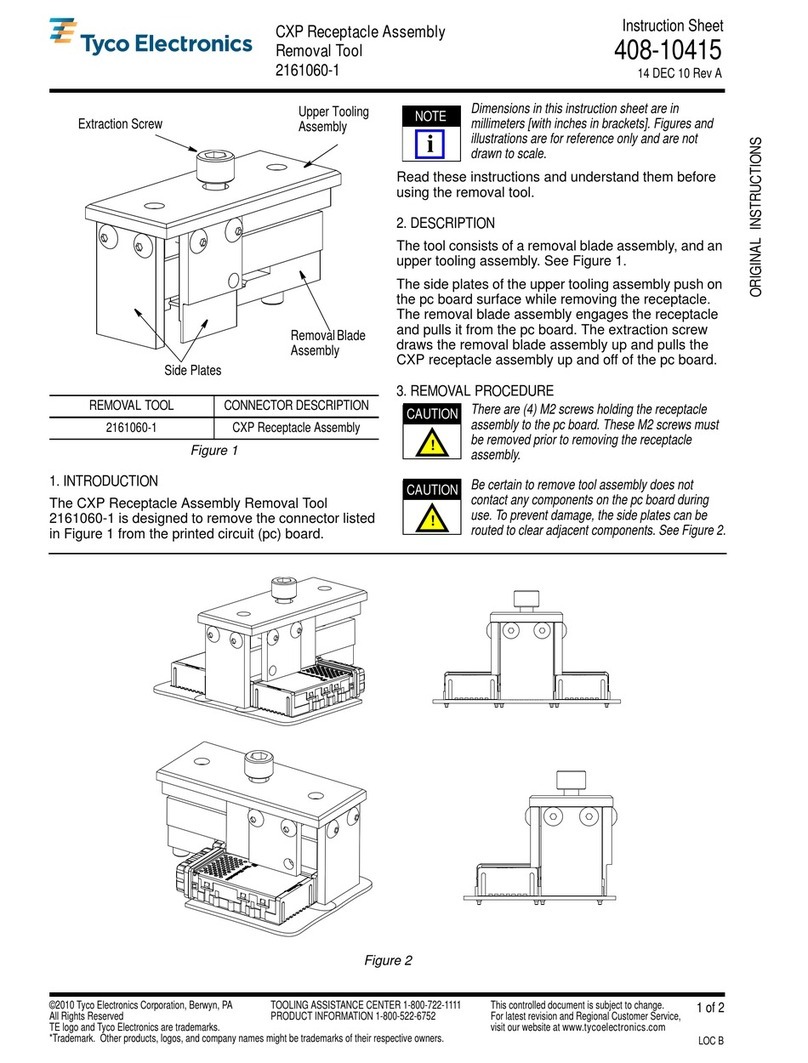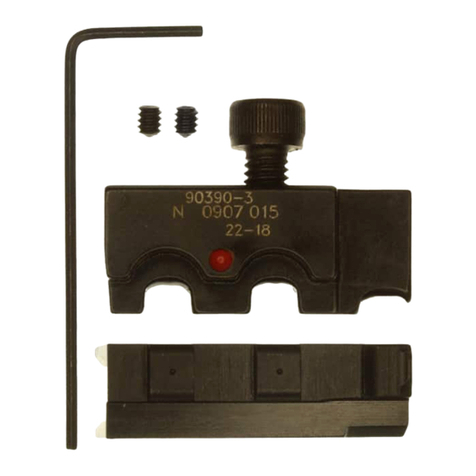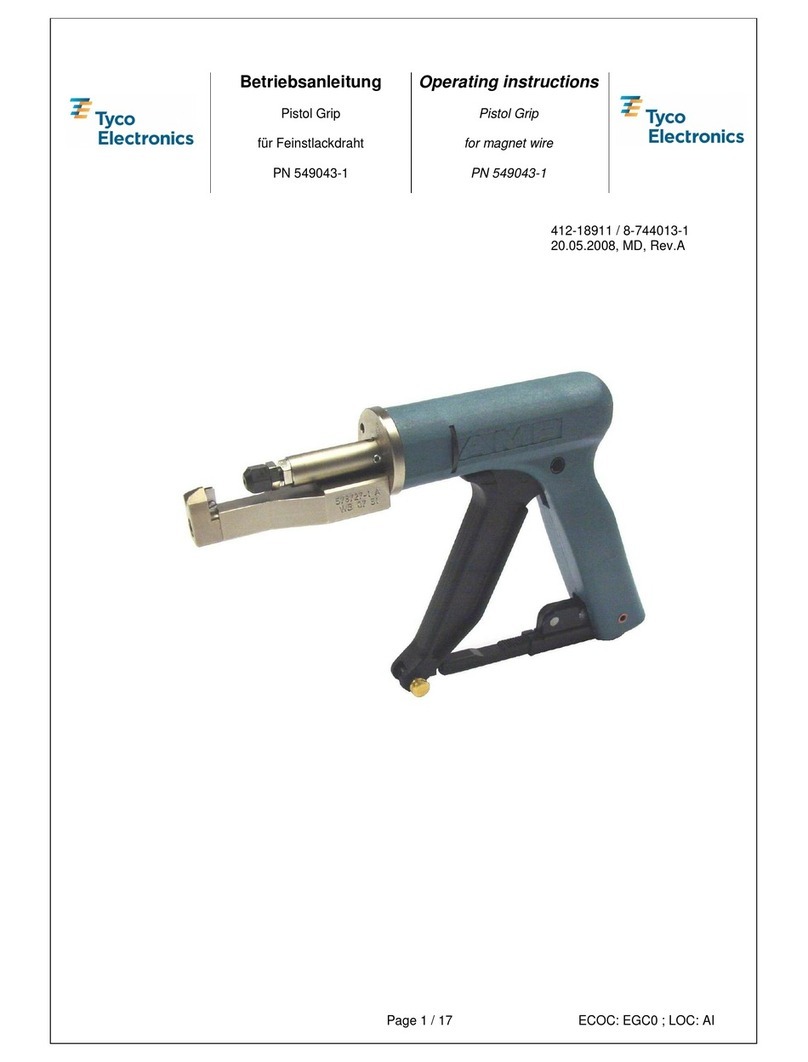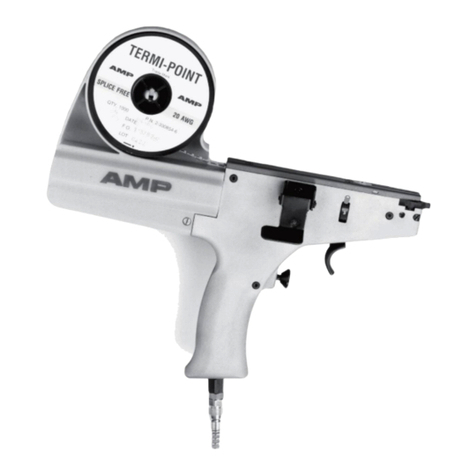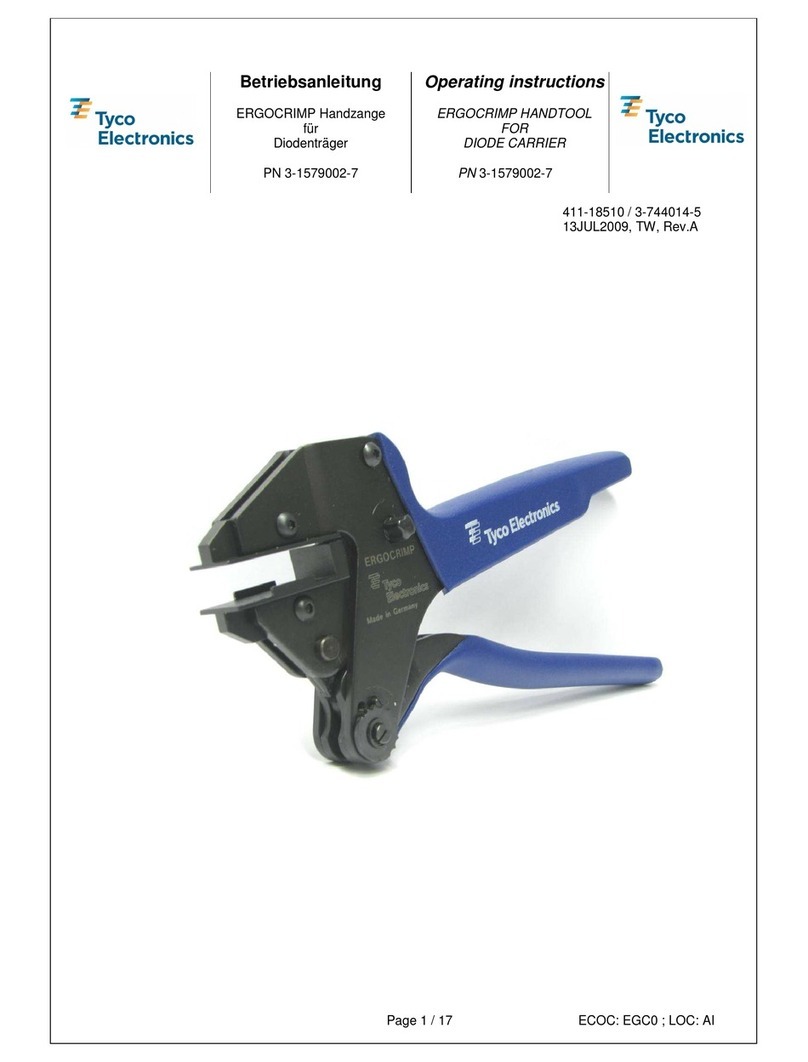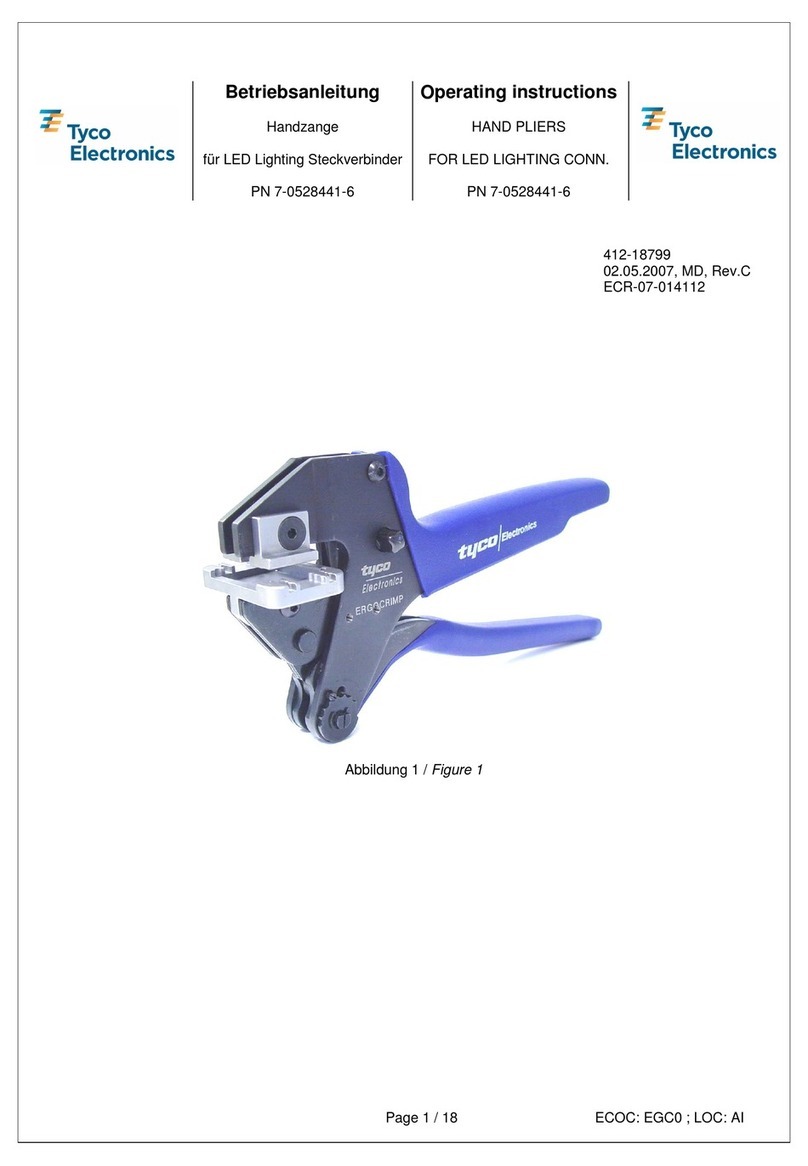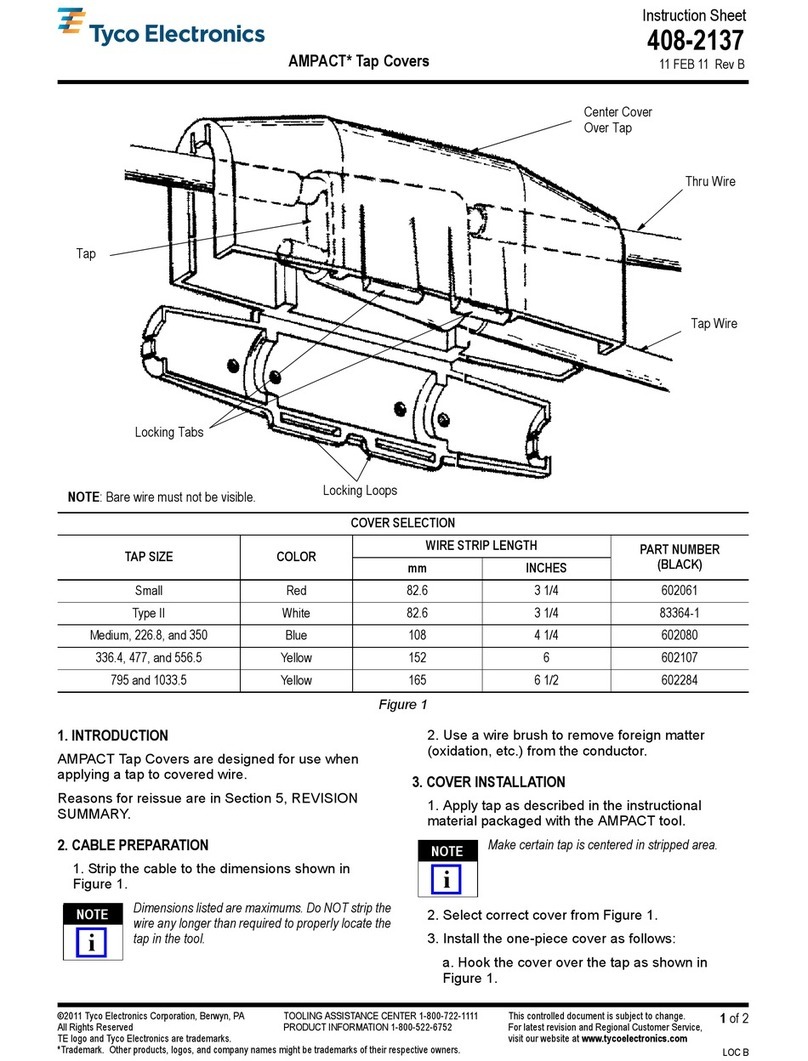
408- 4539
CERTI- CRIMP Straight Action Hand Tool 90720- 1
3of 4Rev ATyco Electronics Corporation
Wipe excess oil from tool, particularly from the
crimping area. Oil transferred from the crimping
chambers onto certain terminations may affect the
electrical characteristics of an application.
4.3. Periodic Inspection
1. Hand tool should be immersed (handles partially
closed) in a reliable commercial degreasing
compound to remove accumulated dirt, grease,
and foreign matter.
2. Close tool handles until the ratchet releases and
then allow them to open fully. If the handles do not
open quickly and fully, the spring is defective and
must be replaced. Refer to Section 5,
REPLACEMENT AND REPAIR.
3. Inspect tool head for worn, cracked, or broken
dies. If damage is evident, return the tool for
evaluation and repair. See Section 5,
REPLACEMENT AND REPAIR.
4.4. Crimp Height Inspection
This inspection requires the use of a micrometer with
a modified anvil as shown in Figure 4. Crimp Height
Comparator RS--1019--5LP is recommended.
1. Refer to Figure 4 and select a maximum size
wire for each crimping chamber.
2. Refer to Section 3, CRIMPING PROCEDURE,
and crimp the contact accordingly.
3. Measure the wire barrel crimp height as shown
in Figure 4. If the crimp height conforms, the tool is
considered dimensionally correct. If not, return the
tool for evaluation and repair (see Section 5,
REPLACEMENT AND REPAIR).
For additional information concerning the use of the
micrometer, refer to instruction sheet 408--7424.
4.5. Ratchet Inspection
The ratchet of the hand tool should be checked to
ensure it does not release prematurely, allowing the
dies to open before they have fully bottomed. Obtain
a 0.025 [.001] shim that is suitable for checking the
clearance between the bottoming surfaces of the
dies. Proceed as follows:
1. Select the maximum size wire for the tool and
strip it to the dimension given in Figure 2.
2. Select the appropriate crimping chamber.
3. Position the contact and wire between the dies
as described in Section 3, CRIMPING
PROCEDURE.
4. Hold the wire in place and squeeze the tool
handles together until the ratchet releases. Hold
the tool handles in this position, maintaining just
Modified
Anvil
Position Point on
Center of Wire Barrel
Opposite Seam Crimp Height
(See Table)
WIRE CRIMPING CRIMP
CONTACT SIZE
(AWG)
INSULATION
DIAMETER
CHAMBER
MARKING
HEIGHT
+0.05
[+.002]
Socket
638090--1
18
2.26--3.18
18 1.37
[.054]
or
Pin
638112--1 16--14
.
.
[.089--.125] 16--14 1.55
[.061]
Figure 4
enough tension on the handles to keep the dies
closed.
5. Check the clearance between the bottoming
surfaces of the dies. If the clearance is 0.025 [.001]
or less, the ratchet is satisfactory. If clearance
exceeds 0.025 [.001], the ratchet is out of
adjustment and must be repaired. See Section 5,
REPLACEMENT AND REPAIR.
5. REPLACEMENT AND REPAIR
DO NOT remove the retaining pins; otherwise,
permanent damage will result to the tool.
Customer--replaceable parts are listed in Figure 5.
A complete inventory should be stocked and
controlled to prevent lost time when replacement of
parts is necessary. Parts other than those listed
should be replaced by Tyco Electronics to ensure
quality and reliability. Order replacement parts
through your representative, or call 1--800--526--5142,
or send a facsimile of your purchase order to
717--986--7605, or write to:
CUSTOMER SERVICE (038--035)
TYCO ELECTRONICS CORPORATION
PO BOX 3608
HARRISBURG PA 17105--3608
For customer repair service, call 1--800--526--5136.
6. REVISION SUMMARY
Revisions to this instruction sheet include:
SUpdated instruction sheet to corporate
requirements
CAUTION
!
